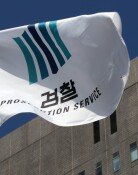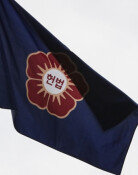NK Back to Using Tactic of Confrontation and Dialogue
NK Back to Using Tactic of Confrontation and Dialogue
Posted November. 11, 2009 23:43,
○ Provocation before dialogue
Just before the first inter-Korean battle in the Yellow Sea in 1999, the U.S. made much effort to talk with the North due to suspicion over nuclear facilities in Kumchang-ri. A U.S. delegation visited underground facilities in Geumchang-ri May 18-24 that year.
The U.S. point man on the North at the time, former Defense Secretary William Perry, visited the North Korea May 25-28. The two Koreas also had secret meetings in Beijing from May 12 to June 3 on holding high-level talks. As a result, inter-Korean vice-minister-level talks were held June 22, 1999.
Before the second battle of Yeonpyeong Island in 2002, the U.S. and North Korea agreed to hold bilateral talks April 30 of that year. After the talks, James Kelly, then assistant secretary of state for East Asia, was scheduled to visit North Korea on July 10.
Lim Dong-won, South Koreas presidential aide for security and diplomatic affairs, visited Pyongyang for talks with North Korean leader Kim Jong Il in early April. In Pyongyang, Lim and Kim promised to normalize inter-Korean relations that had been soured since 2001.
After Lims visit, the fourth round of inter-Korean family reunions was held from April 28 to May 3 and the South Korean government sent 200,000 tons of fertilizer aid to North Korea.
○ Using provocation as a negotiating tactic
After conducting a series of provocations, North Korea usually uses tension as a tactics to deal with South Korea and the U.S. In other words, Pyongyang seeks to remind Seoul and Washington that the Korean Peninsula is still in state of war and that the Yellow Sea has military troubles.
The North uses the fears of its counterparts as a negotiating tactic.
Shortly after the first naval battle, North Koreas Committee for the Peaceful Reunification of the Fatherland said June 26, 1999, The U.S. and South Korea have given up abiding by the armistice agreement. A peace regime between us and the U.S. should be established.
Accordingly, Washington and Pyongyang agreed on a joint communiqué in October 2000. The communiqué said, Tension will be eased on the Korean Peninsula and the armistice should be changed into a peace regime.
Even after the second naval battle in 2002, North Korea pressured the U.S. but got worse results than expected.
Pyongyang admitted to having an enriched uranium program to Kelly, who postponed his visit in the wake of the the battle. He finally visited the North Oct. 3 to pressure Pyongyang, but the Norths provocation resulted in the second nuclear crisis on the Korean Peninsula.
Pyongyang, however, maintained friendly relations with the Kim Dae-jung government of South Korea and expanded inter-Korean exchanges.
kyle@donga.com
Headline News
- Med professors announce intention to leave hospitals starting Thursday
- Bridge honoring Sgt. Moon Jae-sik unveiled in Pennsylvania
- Chief of Staff Chung tells presidential secretaries to stay away from politics
- US FTC bans noncompete agreements
- N. Korea launches cyberattacks on S. Korea's defense companies







